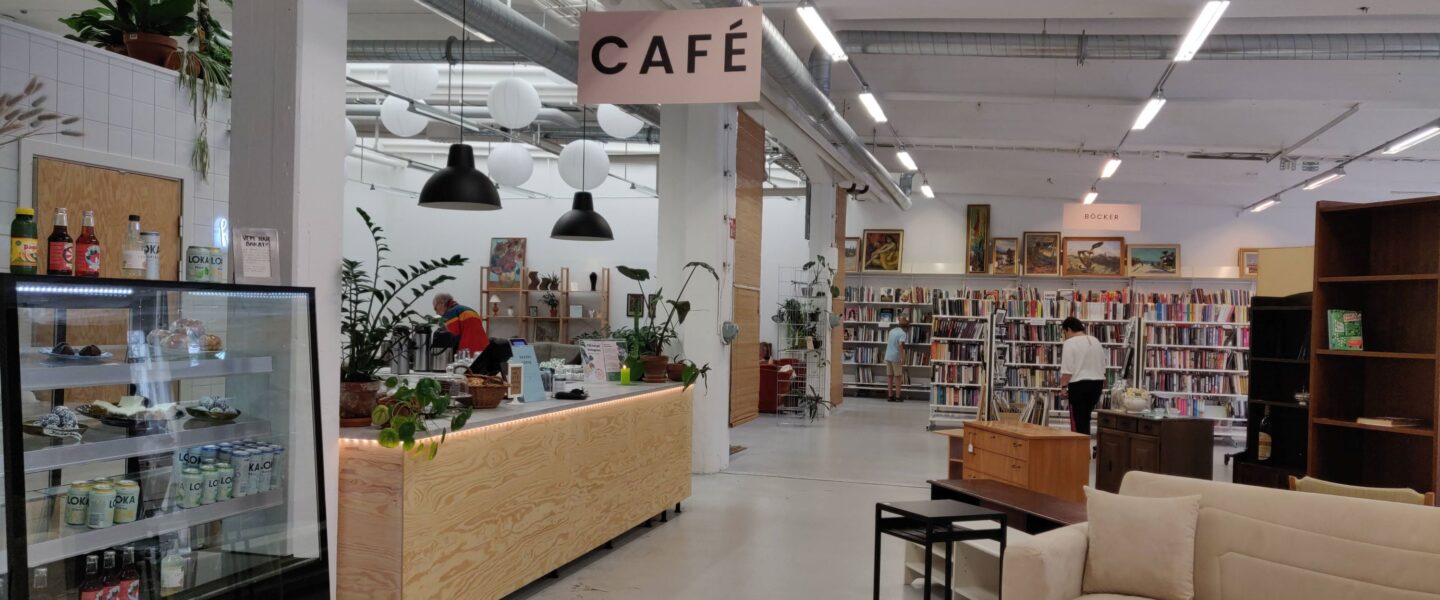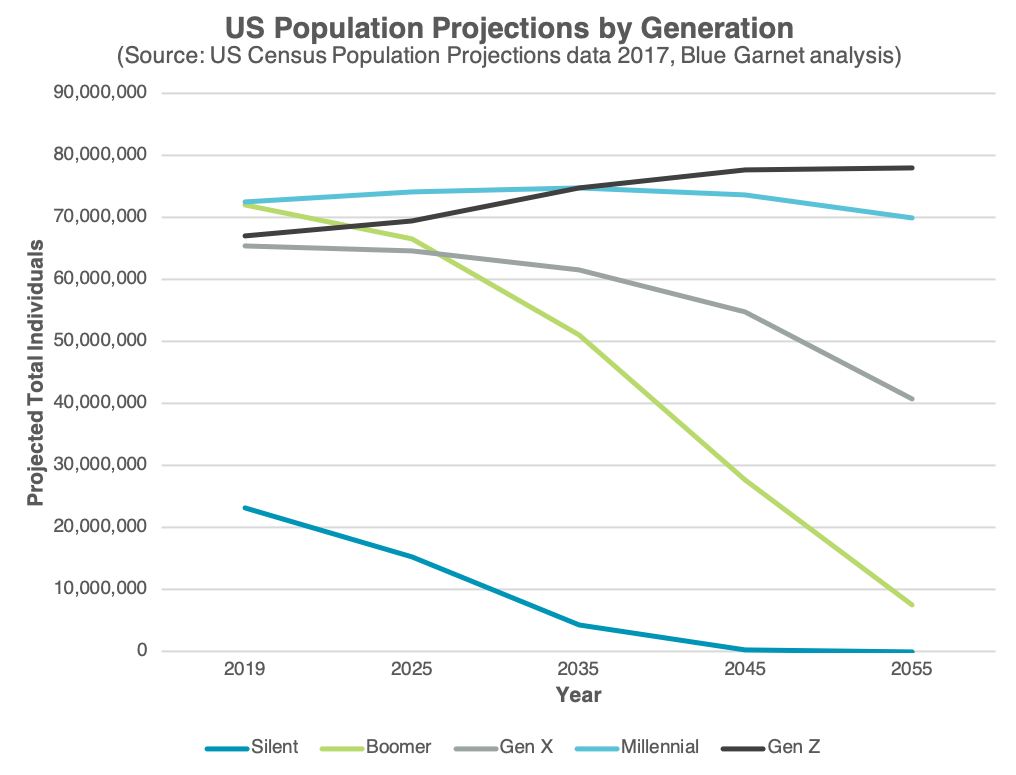
By Sofia Van Cleve and Shannon Johnson
At Blue Garnet, we have a motto: Think long-term, plan for the short term. We want people to think about strategies and solutions for not only today’s needs, but also needs in the future. To what extent do you know the future needs of your team? Your clients? Your community?
It’s a heady question, but we are here to help. While many people tend focus on the tech changes ahead— like the double-edged sword of innovation, technology, and Big Data— we urge you to also consider the changes in people ahead. Namely, Millennials. We think it’s worth your time to learn about this generation, so we compiled some of our learnings and takeaways from recent market research for a corporate strategy project, culture assessment for a regional nonprofit, and “DEI” discussions and workshops.
Millennials are already the largest generation in the labor force and they will become the future leaders of our organizations and our country. Millennials are:
- Those born between 1981 and 1996*1

- Now largest generation in the labor force—over 56 million working or looking for work2
- More educated and racially diverse than previous generations1
- Urban: they flock to urban areas for the lifestyle benefit and job opportunities, despite higher cost of living3. Also, more Millennial families live in cities than in suburbs4
- Purpose-driven: companies that prioritize innovation and societal improvement via their business lower Millennial employee turnover and increase loyalty5
And they value…
- Inclusion and diversity emphasized in the workplace—(including perspective, culture, and lifestyle)5
- Flexibility: many attracted to the gig economy for flexible schedules and lure of supplemental pay5
- Experiences: Several successful brands appeal to the younger audience using experience marketing, creating physical spaces for connection and community6
What does all this mean for your workplace? Between volunteers, board members, leaders, and staff – workplaces often are comprised of 4, if not 5, different generations. It can be challenging to work across them to create shared leadership. Be honest, have you ever heard or thought: “Ugh! Millennials are taking over!,” “Why do Millennials feel entitled to such extreme work flexibility?” or “Why can’t Millennials get off their phone for a second?”
It’s important to acknowledge (and even say out loud) that different generations have different norms, values, and “pet peeves”7. However, you can equip yourself and your team to work through the conflicts and determine how to best engage and employ workers across all generations.
Here are some questions7 to mull over at your next coffee break (or matcha break, in true Millennial fashion):
- How can you expand your conversations to prepare for the future? By focusing and aligning discussions around your organization’s desired future impact, individuals across generations (not just Millennials!) are more likely to be engaged and motivated to make it happen. Pro Tip: make sure you start with together defining a common language about impact.
- What does the future look like for the people you serve? How will you listen to, learn from, and include your constituents in addressing their changing needs? And what does this mean for your team?
- To what extent have your leaders evolved their leadership styles? Emerging norms are for leaders to champion change and build a purposeful culture. Sometimes that means creating space for younger people to challenge, innovate, and teach.
- How do your culture and services factor in generational preferences? How often do you look without blame from different perspectives at your strategies and workplace? In what ways do you seek, listen, and learn from the input of others? How do differing perspectives come to a decision in a healthy way?
We hope this entry sparks some creative thinking on building a healthy cross-generational culture at your organization. Let us know your reactions and experiences related to these questions?
